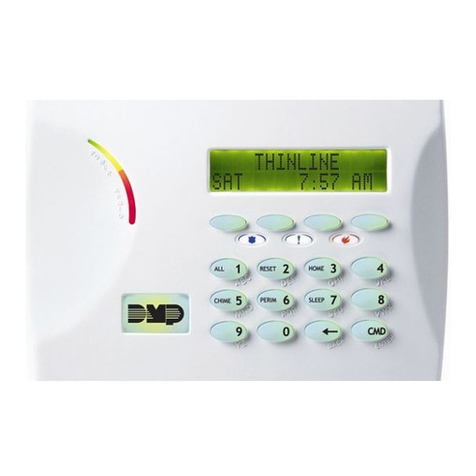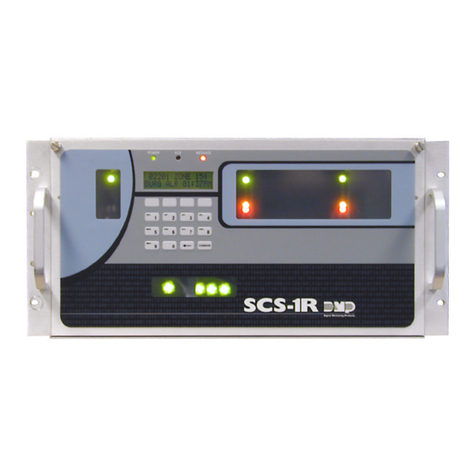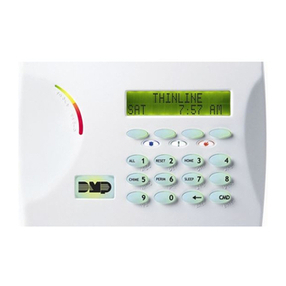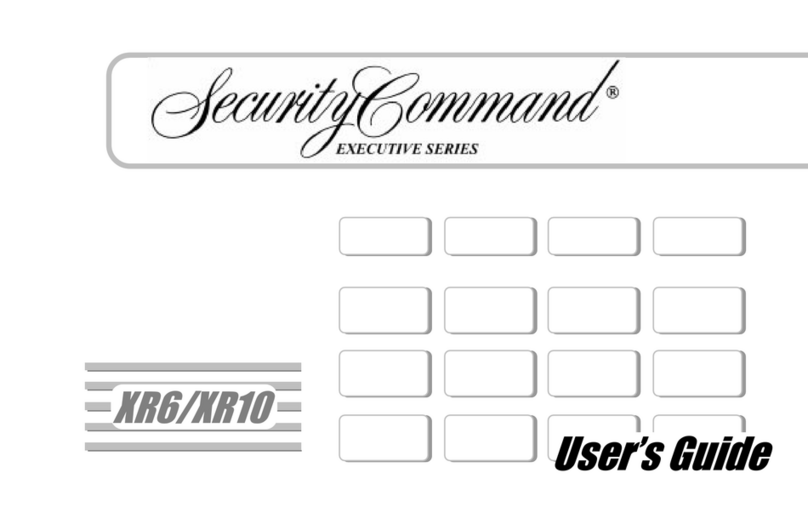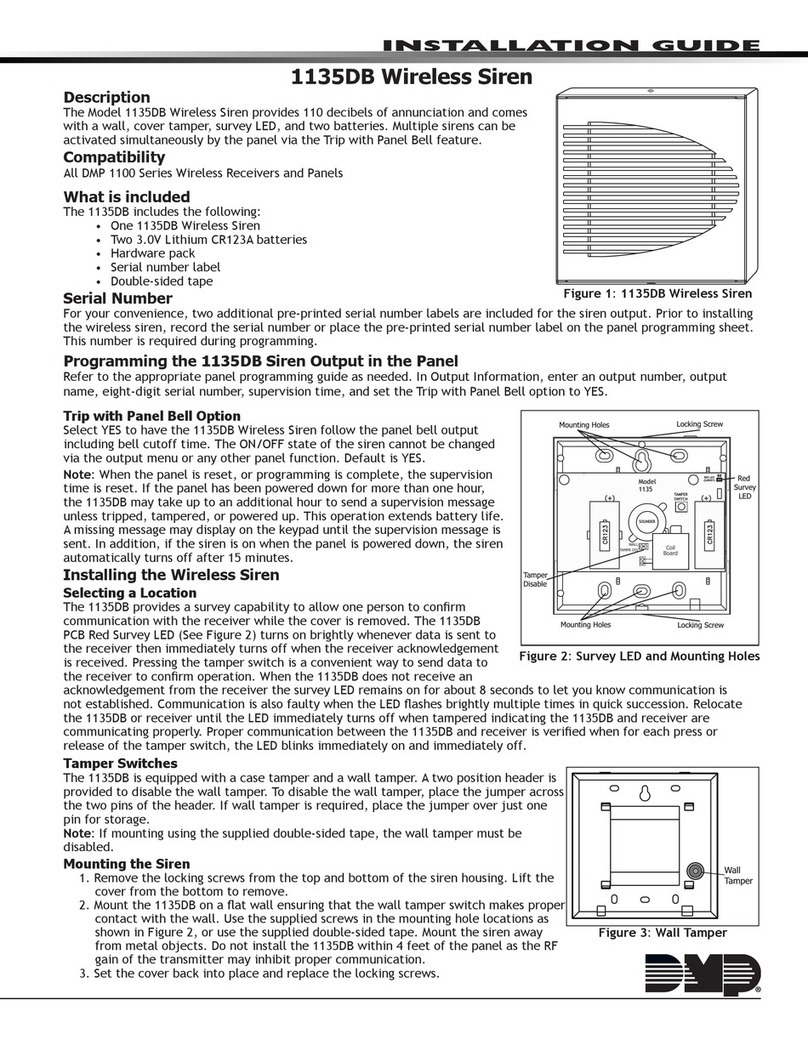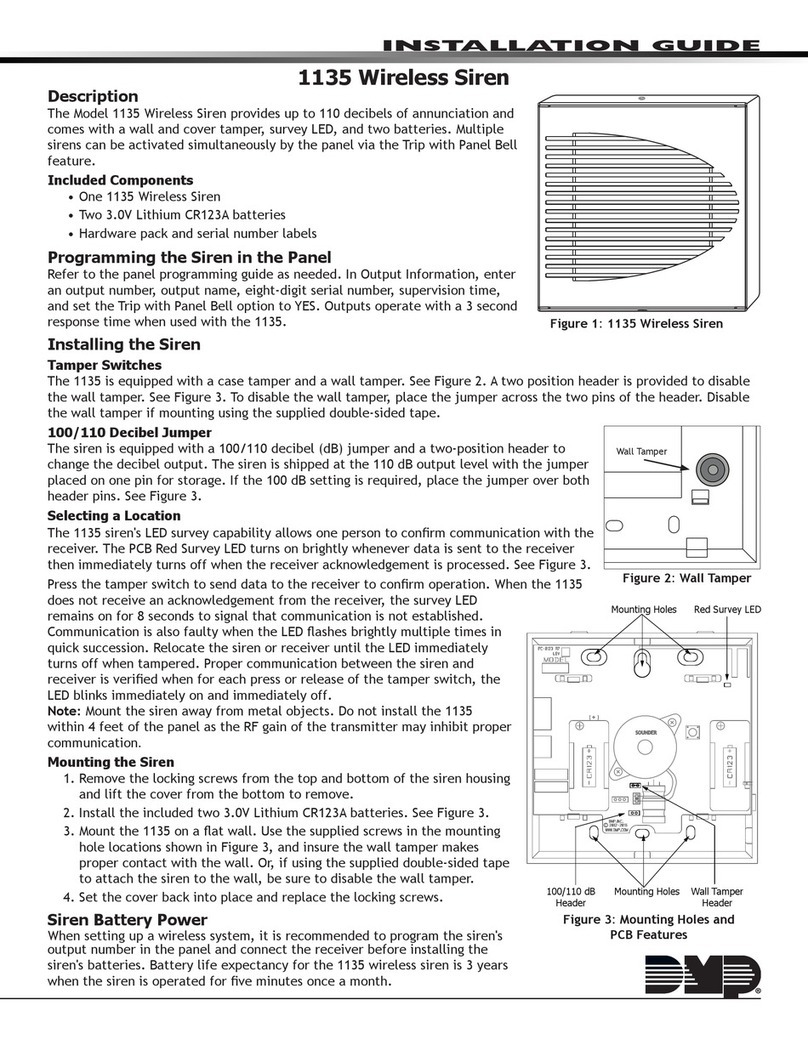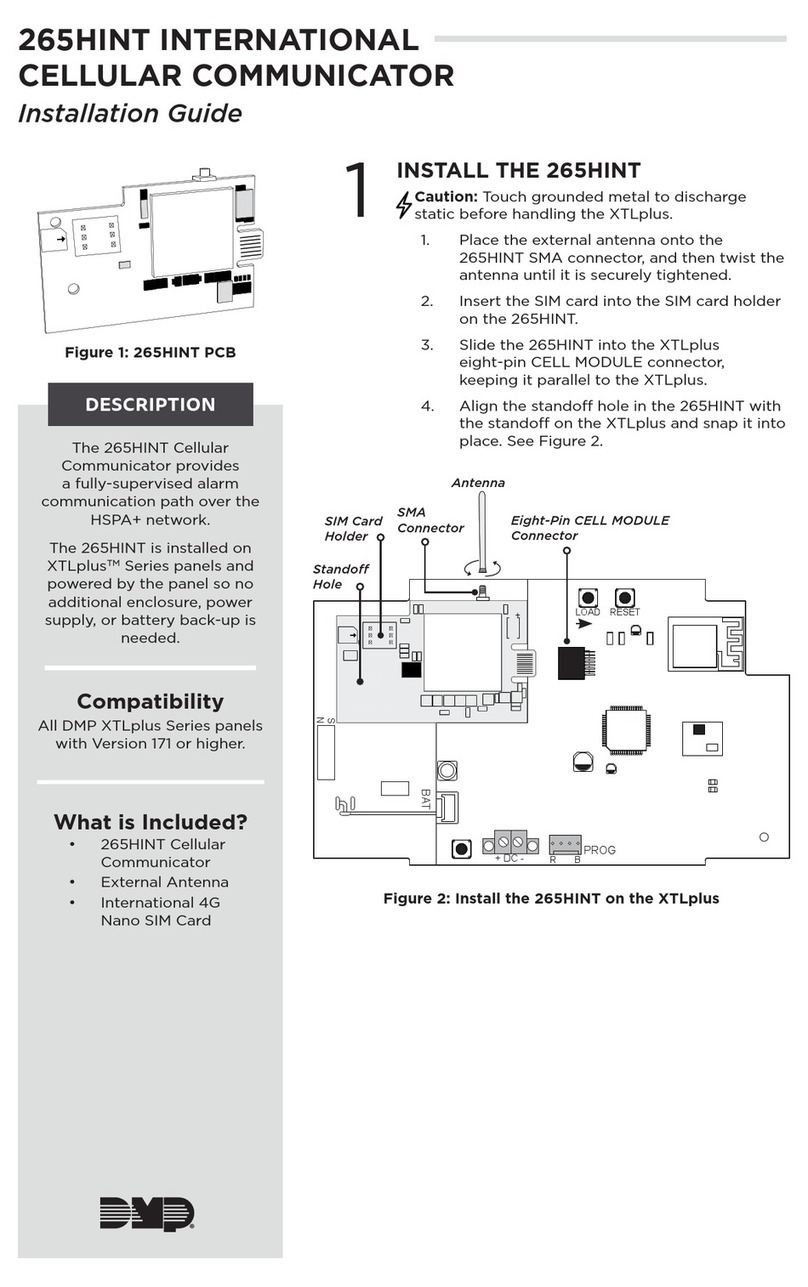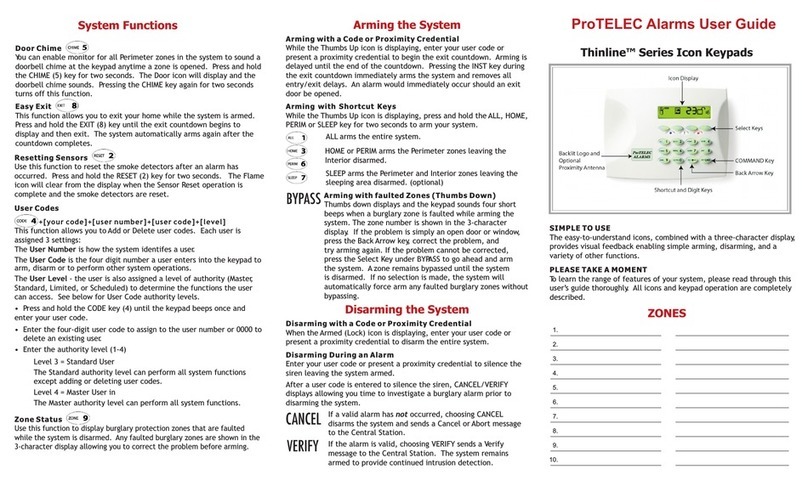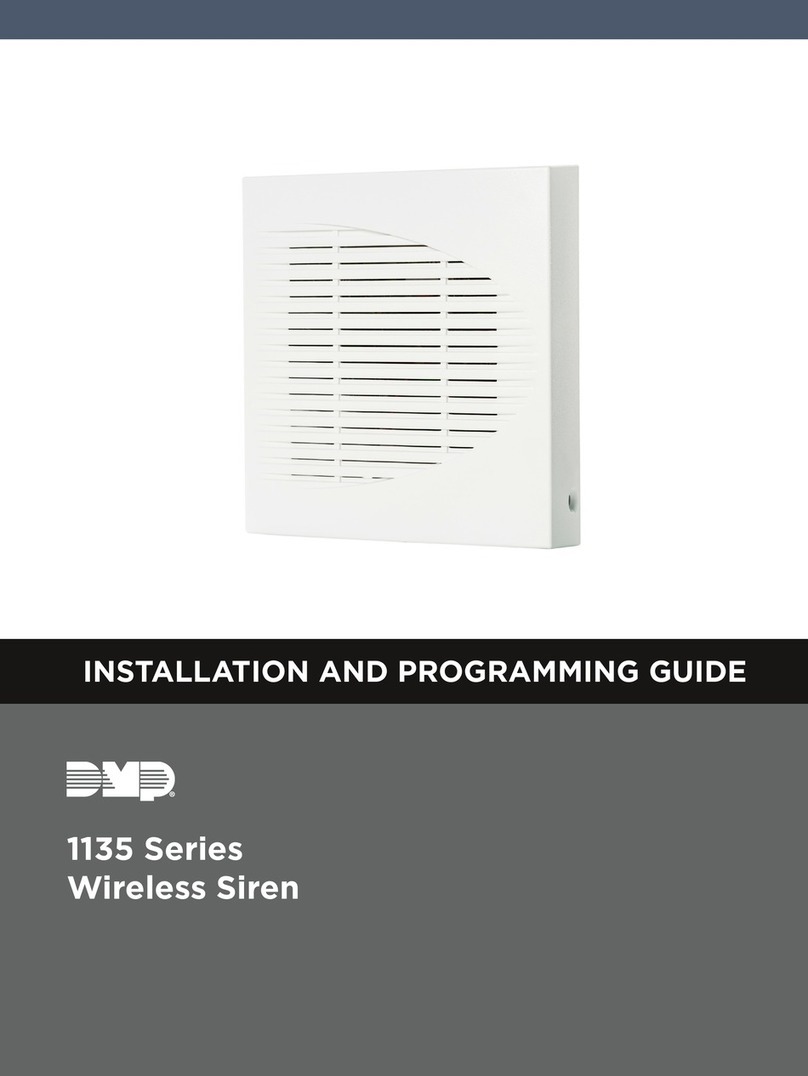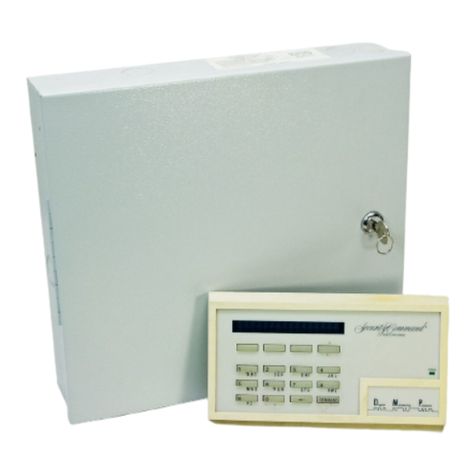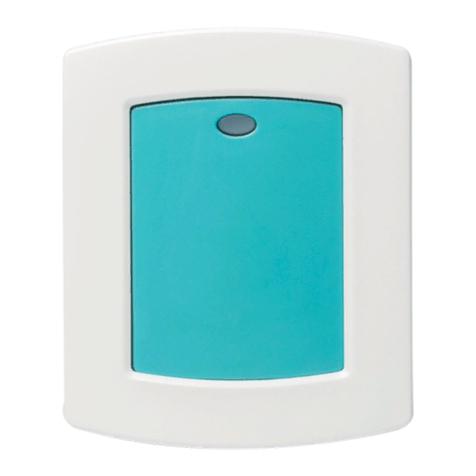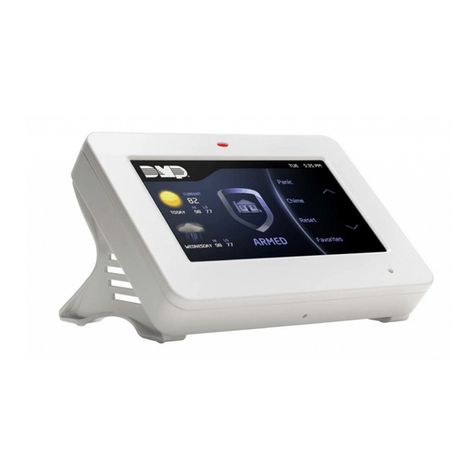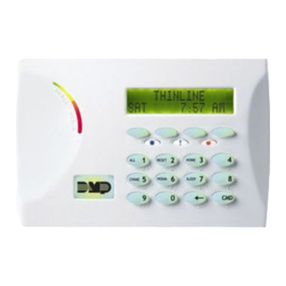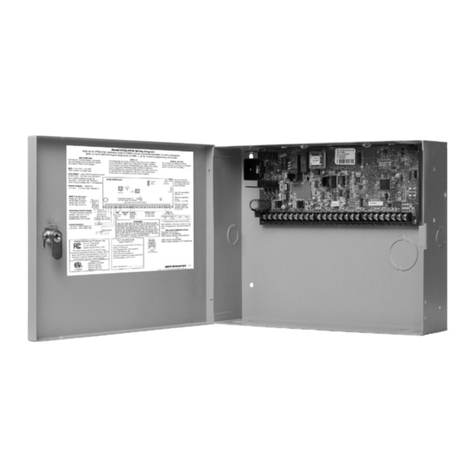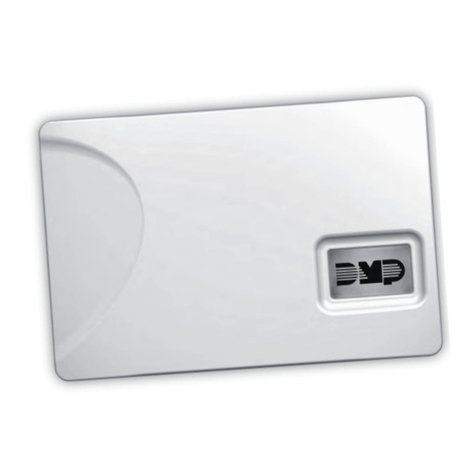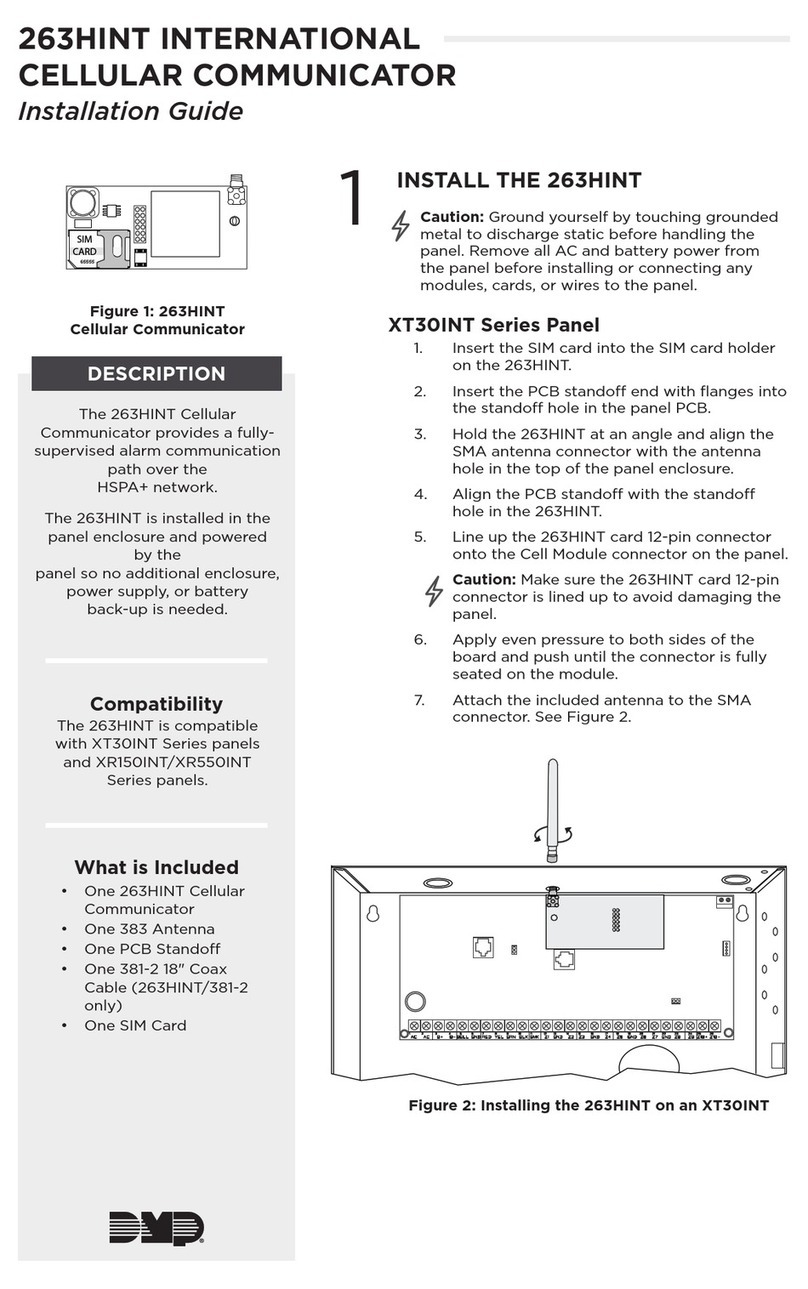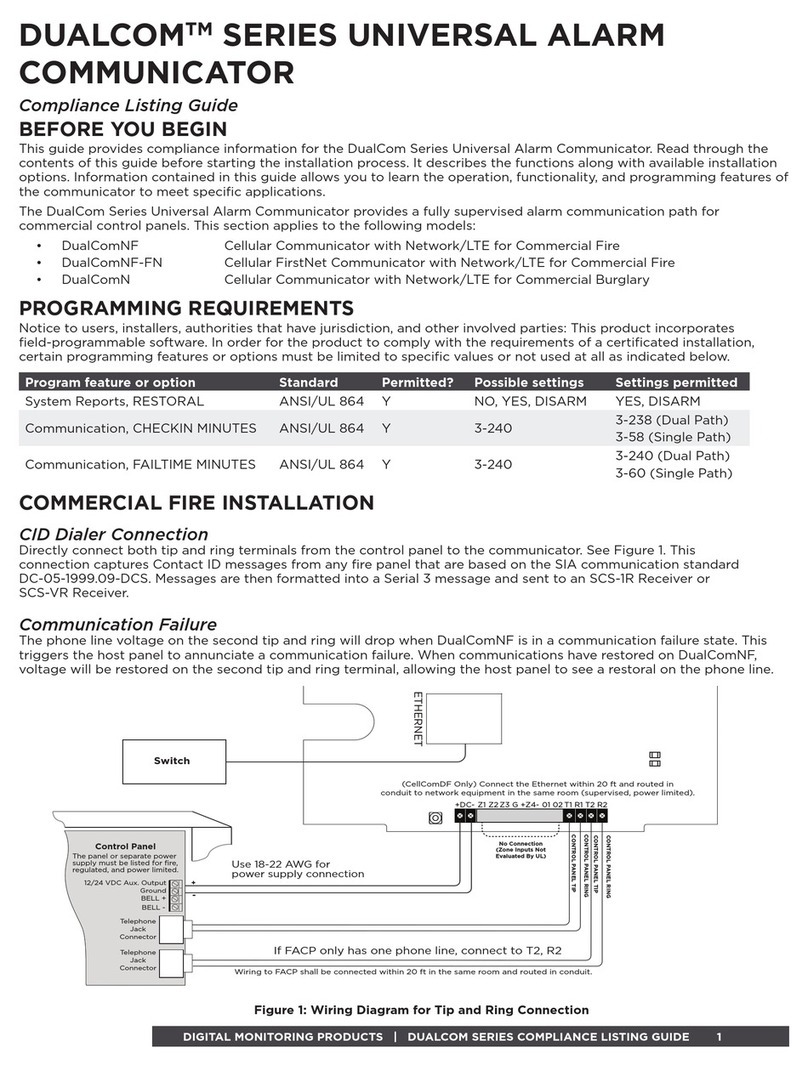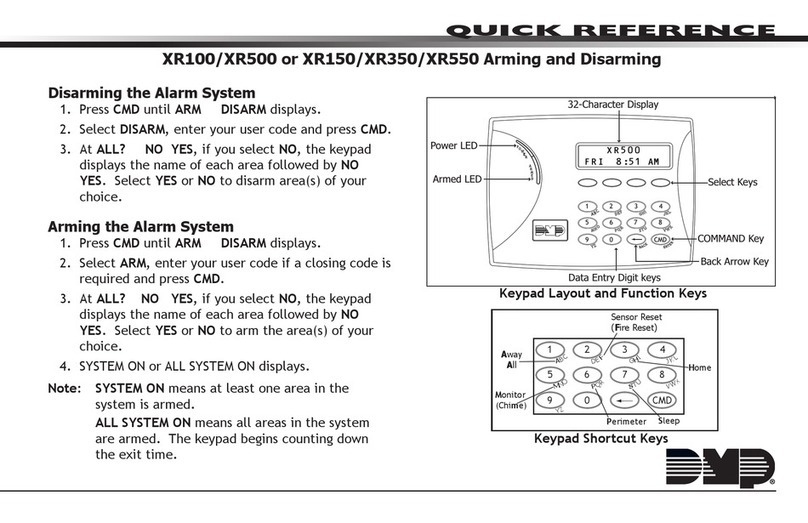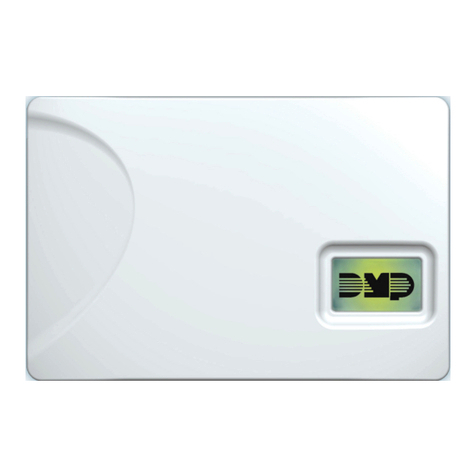
Designed, engineered, and
manufactured in Springfield, MO
using U.S. and global components.
LT-1106 1.06 21305
1135 SERIES WIRELESS
SIREN
Specifications
Battery Life Expectancy 3 years
Battery Type 3.0 V lithium CR123
Internal Sounder Type Y
Tone Output 100dBA at 3 ft (1m)
Frequency Range 905 - 924 MHz
Operating Temperature 32°F to 120°F (0°C to 49°C)
Relative Humidity 85% at 86°F (30 °C)
Housing Material Flame retardant ABS
Weight 0.5lbs (0.23kg)
Dimensions 4.5 L x 4.5 W x 1.25 H in
(11.4 L x 11.4 W x 3.2 H cm)
Compatibility
All DMP 1100 Series Wireless Receivers and burglary panels
Patents
U. S. Patent No. 7,239,236
Certifications
FCC Part 15 ID: CCKPC0123R8
Industry Canada: 5251A-PC0123R8
Underwriters Laboratory Listed:
ANSI/UL 1023 Household Burglar Alarm System Units
ANSI/UL 1610 Central Station Burglar Alarm Units
ANSI/UL 985 Household Fire Warning System
INTRUSION • FIRE• ACCESS• NETWORKS
2500 North Partnership Boulevard
Springfield, Missouri 65803-8877
800.641.4282 | DMP.com
FCC INFORMATION
This device complies with Part 15of the FCC Rules. Operation is subject to the following two conditions:
1. This device may not cause harmful interference, and
2. this device must accept any interference received, including interference that may cause undesired operation.
The antenna used for this transmitter must be installed to provide a separation distance of at least 20cm (7.874in.) from all persons. It
must not be located or operated in conjunction with any other antenna or transmitter.
Changes or modifications made by the user and not expressly approved by the party responsible for compliance could void the user’s
authority to operate the equipment.
Note: This equipment has been tested and found to comply with the limits for a Class B digital device, pursuant to part 15of the
FCC Rules. These limits are designed to provide reasonable protection against harmful interference in a residential installation.
This equipment generates, uses and can radiate radio frequency energy and, if not installed and used in accordance with the
instructions, may cause harmful interference to radio communications. However, there is no guarantee that interference will not
occur in a particular installation. If this equipment does cause harmful interference to radio or television reception, which can be
determined by turning the equipment off and on, the user is encouraged to try to correct the interference by one or more of the
following measures:
1. Reorient or relocate the receiving antenna.
2. Increase the separation between the equipment and receiver.
3. Connect the equipment into an outlet on a circuit different from that to which the receiver is connected.
4. Consult the dealer or an experienced radio/TV technician for help.
INDUSTRY CANADA INFORMATION
This device complies with Industry Canada Licence‑exempt RSS standards. Operation is subject to the following two conditions:
1. This device may not cause interference, and
2. this device must accept any interference, including interference that may cause undesired operation of the device.
This system has been evaluated for RF Exposure per RSS‑102and is in compliance with the limits specified by Health Canada Safety
Code 6. The system must be installed at a minimum separation distance from the antenna to a general bystander of 7.87inches
(20cm) to maintain compliance with the General Population limits.
Le présent appareil est conforme aux CNR d’Industrie Canada applicables aux appareils radio exempts de licence. L’exploitation est
autorisée aux deux conditions suivantes:
1. l’appareil ne doit pas produire de brouillage, et
2. l’utilisateur de l’appareil doit accepter tout brouillage radioélectrique subi, même si le brouillage est susceptible d’en
compromettre le fonctionnement.
L’exposition aux radiofréquences de ce système a été évaluée selon la norme RSS-102et est jugée conforme aux limites établies par le
Code de sécurité 6de Santé Canada. Le système doit être installé à une distance minimale de 7.87pouces (20cm) séparant l’antenne
d’une personne présente en conformité avec les limites permises d’exposition du grand public.
© 2021
